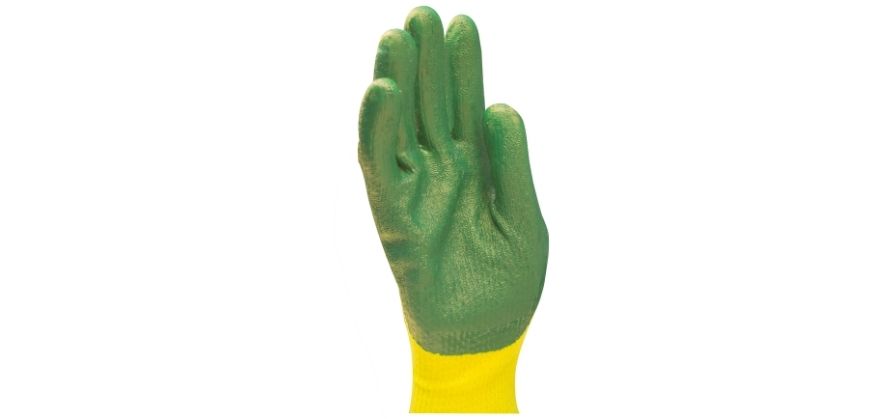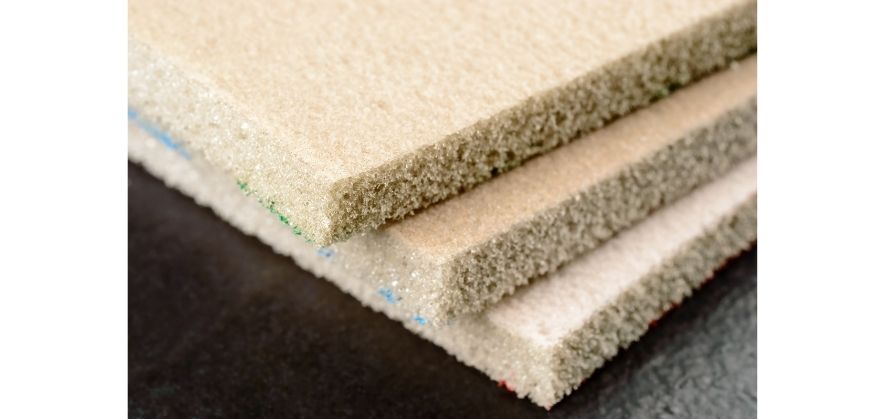Disclaimer: Soccer Whizz is a participant in the Amazon Services LLC Associates Program, an affiliate advertising program designed to provide a means for sites to earn advertising fees by advertising and linking to Amazon.co.uk (source: Section 5). As an Amazon Associate I earn from qualifying purchases.
In the ever-changing world of soccer, the use of goalkeeping gloves is one of the aspects of the game that has remained a constant ever since 1885.
Goalkeeping gloves have always been a significant element of the modern game as they cushion the goalkeeper’s hands and reduce the force of impact from incoming shots.
Back in the day, goalkeepers would only use gloves in bad weather to keep them warm but over the coming years gloves have been developed to offer much more functionality.
Glove technology has developed to the point where goalkeepers can have their pick at different types of gloves which naturally brings more glove manufacturers into the industry.
This article will identify the materials used to manufacture goalkeeping gloves as well as expound on the significance each material holds when it comes to providing essential protection for goalkeepers.
The 5 materials used to make goalkeeper gloves are polyurethane, latex, foam padding, elastic closures and cloth lining. All these materials are synthesized to provide the protection a goalkeeper needs to face an incoming ball.
With that being said, let’s head on to check out further details on the material makeup of goalkeeper gloves.
What components are used to make modern goalkeeper gloves?
First up, we have…
1. Polyurethane
Polyurethane, often referred to as PUR or PU, is a plastic material that’s fundamentally an elastomeric polymer that can be formed into rigid and flexible textures depending on the product being produced.
This material is very durable and flexible making it an ideal material to act as the base of the gloves.
In order to offer the basic protection goalkeepers need for their hands, polyurethane is moulded into a flexible foam that cushions the ball and reduces the amount of force being transferred to the goalkeeper’s hands.
At the same time, polyurethane offers sustained durability as goalkeeper gloves would essentially be useless if they crumbled after a couple of shots.

This durability surprisingly does not compromise on comfort as its responsive internal structure is able to offer the support needed for the hands as well as guaranteeing the prolonged usability of the gloves.
As a result, polyurethane acts as a crucial material in sustaining the sturdiness of the gloves and without it the glove would simply crack when facing a powerful shot.
If you’re interested in buying a pair of polyurethane gloves for use outside of goalkeeping, why not check out these COOLJOB polyurethane gloves that offer excellent compatibility as day-to-day safety gloves.
Next up is…
2. Latex
Another key material used on the palm of goalkeeping gloves is latex.
Latex is a natural substance harvested from plants that’s formulated to act as synthetic rubber.
If you have a closer look at soccer gloves, you’ll notice that the palm is comprised of hundreds of tiny holes weaved into each other.
These microscopic holes form the basis of the effect latex has on the grip provided by gloves. When a goalkeeper attempts to catch an incoming shot, the latex covered on the surface of the palm expands upon impact and morph themselves to complement the shape of the ball thus providing the grip a goalkeeper needs to catch the ball.
Without this material, it would be harder to catch the ball and it’s more likely that an oncoming shot would be parried into the path of a nearby attacker.
However, the effectiveness of latex can vary depending on the weather conditions on the pitch, as dry latex tends to make it difficult for the gloves to expand and can thus compromise on the durability of the gloves by forming cracks on the palm.
It’s also important to note that there are different types of latex, including:
- contact latex
- cyclone latex
- quartz latex
You’ll read more about how each of these compare against each other later on in the article.
Below is a brief demonstration of the grip provided by goalkeeper gloves and how they make it easier for the goalkeeper to cleanly catch the ball:
Now let’s move on to component three…
3. Foam padding
Foam padding is a flexible external lining used to provide extra protection and comfort for the goalkeeper’s hands.
The padding is usually placed just above the latex surface in order to work hand in hand with it.
In the face of an oncoming shot, the foam padding will receive majority of the impact from the force.

As this material fundamentally has a low density, the padding cannot withstand the full force of the shot and its purpose is therefore to reduce the burden that the latex inner layer receives.
Foam padding is not very durable so in order to protect the durability of the latex its placed right on the surface of the glove.
Modern gloves can be designed to maximize on this extra protection, such as the No products found..
I’d highly recommend them as they provide enhanced finger protection suitable for both beginners and professionals.
4. Elastic closures
Elastic closures are basically the rubber straps used to tighten the gloves.
Goalkeepers tend to face a large volume of shots in a typical game and it’s important that their gloves are fixed in place so that they get the maximum protection.
The strap needs to be placed at the ideal point of the wrist.
If the strap is too tight, the materials can end up enduring more pressure from the consecutive impacts and thus wear down at a faster rate.
On the flip side, if the strap is too loose, this could result in an unnatural grip of the ball which leads to higher chances of the ball being parried instead of being caught.
Ultimately, the right balance is key and needs to be established so that the goalkeeper is in a comfortable position and have the most natural contact on the ball.
And finally, we have…
5. Cloth lining
Cloth lining is an inner layer of fabric usually centralized around the fingertips of the gloves that reduces the wearing strain on the gloves and provides protection for the goalkeeper’s fingers.
The fingertips are easily the most vulnerable part of the hand prone to injury and its essential that they are adequately protected.
Multiple layers of cloth lining are used to cushion the impact on the fingertips to provide the maximum protection.
Check out the video below which illustrates the different types of finger save spines being manufactured by glove brands:
Which materials are best for goalkeeper gloves?
When it comes down to which materials are best for goalkeeper gloves, you have to take a closer look at playing conditions as well as the feature being prioritized.
Contact latex is very good in dry conditions and relatively good in wet conditions but on the other hand, cyclone latex tends to be the best in wet conditions and relatively good in dry conditions.
Durability for both of these types of latex is relatively the same but if you’re looking for durability then quartz latex is the way to go.
Quartz latex has the highest durability and is well balanced in both wet and dry conditions.
In terms of grip, contact latex is currently the best in the market and is being used across every tier of English soccer.
For a scale of all latex grades, check out this guide.
Closing thoughts
To conclude…
Goalkeeping gloves are comprised of many materials such as polyurethane, latex, foam padding, elastic closures and cloth lining. All these materials are weaved together to provide goalkeepers with the basic protection needed to comfortably catch the ball.
They also make this even easier by providing wearers with grip when in contact with the ball.
If this article has convinced you to take your wallet out, then have a look at our roundup post on the best goalkeeper gloves, as it will provide you with a good starting point on making a purchase.
If you enjoy the content that I create and would like to buy me a coffee, then I’d really appreciate it!
Any money that I earn through this donation will be re-invested into more content for this website.
Additionally, by sending in a donation you’ll also receive a copy of my recently released 190+ page eBook on Soccer Ball Care, as well as be subscribed to our mailing list where you’ll be regularly informed on the latest developments concerning the Soccer Whizz blog.
- Future Icons: Europe’s Emerging Midfield Maestros Set for Glory - December 4, 2023
- Kickstarting a Revolution: How Soccer Transformed the United States Over the Last Four Years - October 7, 2023
- 4-1-4-1 Soccer Formation [Analysis] - September 23, 2023

